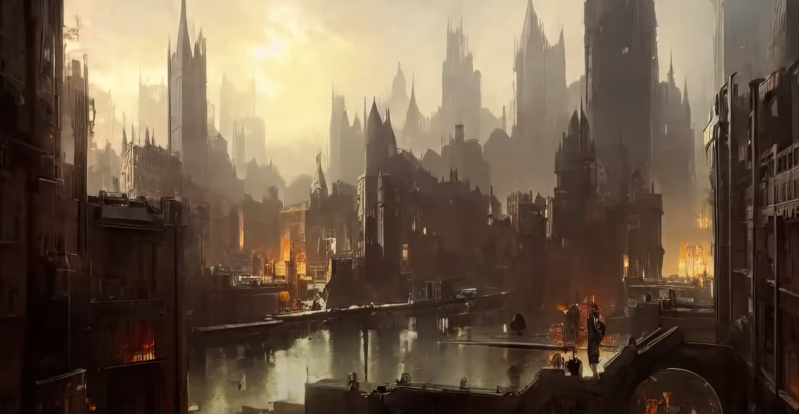We love the intersection between art and technology, and a video made by an AI (Stable Diffusion) imagining a journey through time (Nitter) is a lovely example. The project is relatively straightforward, but as with most art projects, there were endless hours of [Xander Steenbrugge] tweaking and playing with different parts of the process until it was just how he liked it. He mentions trying thousands of different prompts and seeds — an example of one of the prompts is “a small tribal village with huts.” In the video, each prompt got 72 frames, slowly increasing in strength and then decreasing as the following prompt came along.
There are other AI videos on YouTube, often putting the lyrics of a song into AI-generated form. But if you’ve worked with AI systems, you’ll notice that the background stays remarkably stable in [Xander]’s video as it goes through dozens of feedback loops. This is difficult to do as you want to change the image’s content without changing the look. So he had to write a decent amount of code to try and maintain visual temporal cohesion over time. Hopefully, we’ll see an open-source version of some of his improvements, as he mentioned on Twitter.
In the meantime, we get to sit back and enjoy something beautiful. If you still aren’t convinced that Stable Diffusion isn’t a big deal, perhaps we can do a little more to persuade your viewpoint.

















He forgot to include the bit where the world was destroyed in a nuclear armegedon.
The nuclear exchange is nothing but a microsecond in what we call… spacetime.
(hope someone gets the reference, hehe)
even read it in his voice XD
The greatest hack is coaxing the system to do what it wasn’t designed for.
“Can a robot write a symphony? Can a robot turn a… canvas into a beautiful masterpiece?”
Technically no, because it takes a programmer to control the robot.
It is not as if the people training the AIs are specifying how to make art. They give a relatively simple algorithm examples of art and it learns general patterns.
Giving examples is precisely “specifying how to create art”.
Do we even know how to “create art”? If you can specify the process and do it automatically then it isn’t art, it’s an algorithm.
The AI will discern the patterns in what it is shown and the generated output will depend completely on what the humans have decided to show it. If they show it 50 pictures of dogs playing cards then the AI will decide that “art” is pictures of dogs playing cards.
The patterns that it recognizes are not necessarily “simple”, they can have whatever complexity that is necessary to fit the examples. For example you can show it hundreds of pictures of legal chess boards and it will have to divine the rules of chess to make its own images.
Even a good algorithm can be classed as art!
Ever heard the saying “that was a work of art” over many thing which arnt classed as art.
You may not see an algorithm as art, but I’m a way, it’s the programmers art! The art is the ability to program a device to do such a thing.
Algorithm or not, it’s still a work of art!
Cool so I guess we end up at the final scene from the End Sinister episode of Aeon Flux
1:38 – Centaur!
Nice collage, of other people’s work.
As a father of 3 artists, I whole heartedly agree.🙄
Sorry but this is the future. With around 1 but per picture in the input it would be very hard to argue that there are any individual images represented.
Hmm, a collage is a collection of pieces of other things. Can you identify any of the parts and provide sources?
The training data set?
So, no. You can’t identify any from the video. Gotcha.
Nice video, but :
0:57 a guy in front of dinausaurs !
2:04 pyramid of Khafre & other pyramids : at that time the flat limestone casing was fully completed.
https://apologeticspress.org/physical-evidence-for-the-coexistence-of-dinosaurs-and-humans-part-i-2416/
Such a creative video!